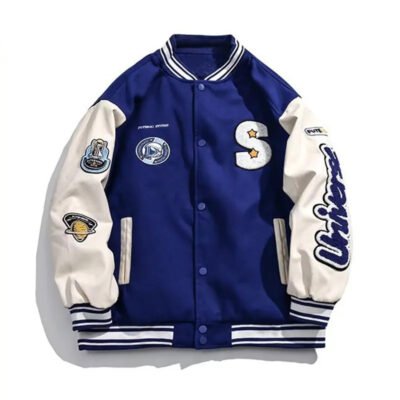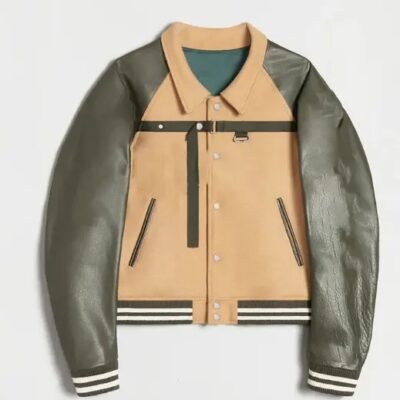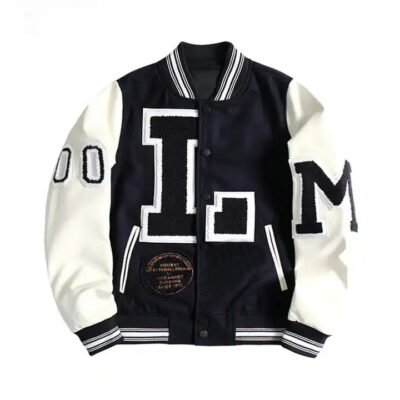Varsity jackets, with their distinctive style and rich history, are more than just pieces of apparel; they are symbols of achievement and identity. The process of making a varsity jacket is a blend of traditional craftsmanship and modern techniques, resulting in a garment that is both functional and stylish. This article takes you through the detailed steps involved in creating a varsity jacket, from initial design to the final touches.
1. Design and Customization
Conceptualizing the Design
The journey of a varsity jacket begins with its design. This step involves deciding on the overall look, including the color scheme, fabric selection, and placement of patches or embroidery. Designers typically collaborate with clients—whether schools, teams, or individuals—to ensure that the jacket reflects the desired aesthetic and identity.
Customization Options
- Colors: The body and sleeves often feature contrasting colors, typically representing school or team colors.
- Logos and Letters: Embroidered or chenille patches representing the school, team, or personal achievements are key elements.
- Personalization: Names, numbers, and other details can be added to further personalize the jacket.
2. Material Selection
Choosing the Right Fabrics
The choice of materials is critical in ensuring the jacket’s durability, comfort, and appearance. The most common fabrics used include wool for the body and leather for the sleeves, though other materials like cotton, polyester, and synthetic blends are also popular.
Key Materials
- Wool: Often used for the jacket’s body, providing warmth and a traditional look.
- Leather: Typically used for the sleeves, adding durability and a contrasting texture.
- Ribbed Knits: Used for the collar, cuffs, and waistband, these provide elasticity and a snug fit.
3. Pattern Making and Cutting
Creating the Patterns
Once the design is finalized and the materials are selected, the next step is to create patterns. Patterns are templates used to cut the fabric pieces accurately, ensuring that each piece fits together perfectly during assembly. Skilled pattern makers draft these patterns based on the jacket’s measurements and design specifications.
Cutting the Fabric
With patterns in hand, the fabric is carefully laid out and cut according to the templates. Precision is essential during this step, as any errors can affect the fit and finish of the jacket. Each component of the jacket—the body, sleeves, collar, cuffs, and lining—is cut separately.
4. Assembly
Sewing the Pieces Together
The assembly process begins with stitching the individual fabric pieces together. Skilled craftsmen and seamstresses work to sew the body, sleeves, and linings with meticulous care, ensuring strong seams and a clean finish. The ribbed knits are attached to the collar, cuffs, and waistband, adding elasticity and structure to the jacket.
Adding Pockets and Zippers
Functional elements such as pockets and zippers are added during this stage. Pockets are sewn into the side seams or chest area, while zippers or buttons are attached to the front opening. The placement and construction of these elements require precision to ensure both functionality and aesthetics.
5. Embellishments
Applying Patches and Embroidery
One of the most distinctive features of a varsity jacket is its embellishments. Chenille patches, representing letters, logos, or numbers, are either sewn or heat-pressed onto the jacket. Embroidery, which might include names, team names, or other details, is added using specialized embroidery machines.
Custom Touches
Additional embellishments such as piping, stripes on the sleeves, or personalized details are added according to the client’s specifications. These touches give each jacket its unique character and significance.
6. Finishing Touches
Lining and Inspection
Once the jacket is fully assembled, it’s lined with a suitable fabric, often satin or quilted polyester, to ensure comfort and warmth. The jacket is then carefully inspected for any defects or inconsistencies. Quality control is crucial at this stage to ensure that the jacket meets the required standards.
Pressing and Packaging
The final step in the process is pressing the jacket to remove any wrinkles and ensure a crisp, clean appearance. After pressing, the jacket is carefully folded and packaged, ready for delivery to the customer.
Conclusion
The making of a varsity jacket is a meticulous process that combines traditional craftsmanship with modern techniques. Each step, from design to finishing touches, is carried out with precision and care to produce a garment that is not only stylish but also rich in meaning. Whether worn as a symbol of achievement or as a fashion statement, a well-crafted varsity jacket stands the test of time, embodying both quality and tradition.








